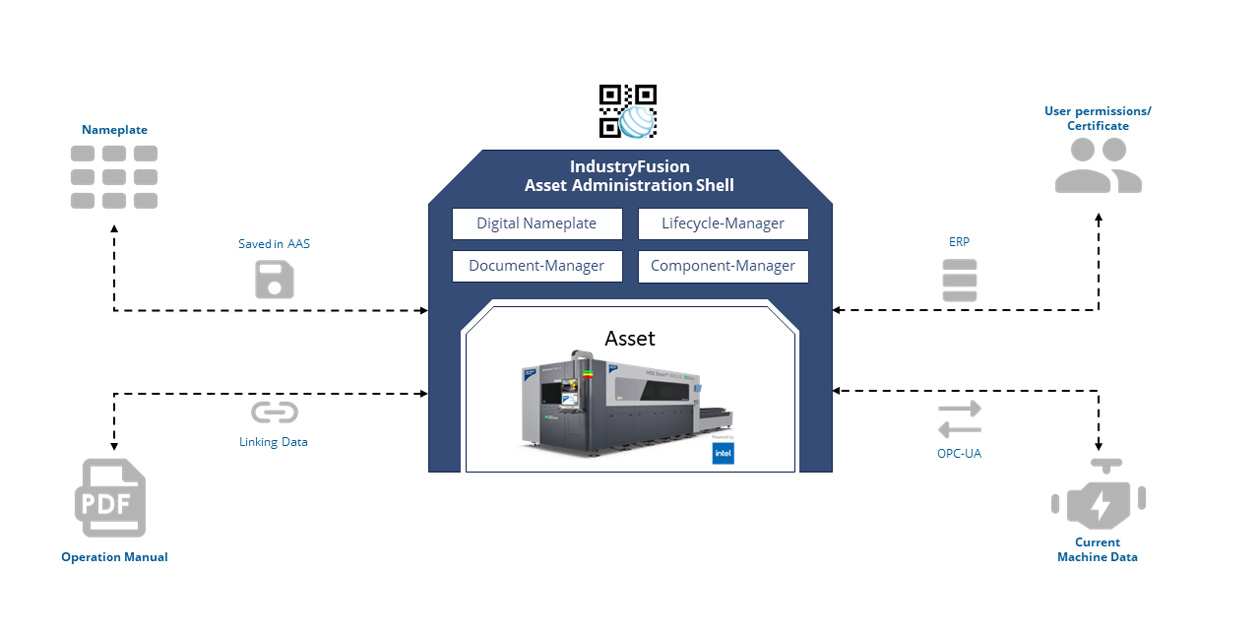IF-management tray
Challenges
Data is stored in internal company systems. In addition to machine data, this includes classic ERP systems as well as all other software components such as CAD/CAM or software for work preparation. Previous approaches to storing data in management trays are based on collecting data in a central location, regardless of whether another data storage location already exists. The management tray as storage is handed over to the customer/user with the asset.
Solution with IndustryFusion
The IndustryFusion-X solution follows the approach of linking all further data via the IndustryFusion management shell based on stored basic data similar to a type plate. The original data remains in its storage location and can thus be supplemented with further information. At the same time, data such as an instruction manual is not stored per instance, but once per object type. This reduces memory consumption, prevents different data statuses and thus reduces search and demand tasks. The IndustryFusion management shell is currently divided into the areas of type plate, linking of documents (operating instructions, CE certificate, ...), the lifecycle manager (including linking to ERP systems, application of user rights and proof of capability) and the component manager (linking to subordinate assets, storage of operating data).

Benefits
Every user of IndustryFusion-X can access the existing data independently, provided it has been released by the machine manufacturer or factory operator. The collection of data, links and combination of components in a place independent of the asset enables the simple application of further applications without further data collection. At the same time, administrative tasks such as finding the current version of an instruction manual or sending an updated file to machine owners are eliminated. Information, e.g. on error patterns and possible solutions, is no longer internal to the company, but can be made available to all users of a machine, reducing the time needed to find problems and thus extending usage times.